- Understanding the Benefits of Humus
- 1. Improves Soil Structure
- 2. Enhances Nutrient Retention
- 3. Increases Water Holding Capacity
- 4. Enhances Soil Fertility
- 5. Supports Beneficial Soil Microorganisms
- 6. Reduces Soil Erosion
- 7. Promotes Carbon Sequestration
- 8. Supports Sustainable Agriculture
- Exploring the Differences Between Humus and Compost
- Composition
- Production
- Benefits
- Uses
- Conclusion
- How to Make Humus
- Step 1: Collect Organic Material
- Step 2: Shred or Chop the Materials
- Step 3: Create a Compost Pile or Bin
- Step 4: Maintain Moisture and Aeration
- Step 5: Monitor Temperature
- Step 6: Wait and Let It Decompose
- Step 7: Harvest the Humus
- Gathering the Right Ingredients for Homemade Humus
- 1. Organic Matter
- 2. Carbon-rich Materials
- 3. Moisture
- 4. Aeration and Nitrogen
- Step-by-Step Guide to Making Humus
- Materials:
- Instructions:
- Where to Use Humus
- 1. Soil Amendment and Conditioner
- 2. Vegetable and Flower Gardens
- 3. Lawns
- 4. Potting Mixes
- 5. Compost Piles
- 6. Erosion Control
- 7. Restoration Projects
- Utilizing Humus in the Garden
- 1. Soil Amendment
- 2. Mulching
- 3. Compost Pile Ingredient
- 4. Seed Starting Mix
- 5. Transplanting Aid
- 6. Container Gardening
- 7. Organic Fertilizer
- 8. Soil Erosion Control
- Using Humus for Indoor Plant Care
- Benefits of Using Humus for Indoor Plants
- How to Incorporate Humus into Indoor Plant Care
- Using Humus for Different Types of Indoor Plants
- “Question-Answer”
- What is humus and how is it different from compost?
- How can I make humus?
- What are the benefits of using humus in gardening?
- Where can I use humus besides in the garden?
- Can I buy humus instead of making it?
- Are there any downsides to using humus?
- “Video” 3 Free Ways to Make Your Own Soil for Growing Organic Food – Regenerative Gardening & Permaculture
Humus is a vital component of healthy soil and can be a better alternative to compost in certain situations. Humus is the dark, organic matter that forms in soil when plant and animal matter decomposes. It is nutrient-rich and improves soil structure, water retention, and nutrient availability. In this article, we will explore how to make humus and where to use it in your garden or landscape.
To make humus, start by collecting organic material such as leaves, grass clippings, kitchen scraps, and garden waste. These materials should be rich in carbon and nitrogen and can be layered in a compost pile or bin. It’s important to have a mix of “browns” (high in carbon) and “greens” (high in nitrogen) to ensure proper decomposition. Brown materials include dry leaves, straw, and cardboard, while green materials include grass clippings, kitchen scraps, and fresh plant trimmings.
Once you have your compost pile or bin set up, be sure to regularly turn the pile to promote decomposition and prevent odors. The pile should also be kept moist, but not too wet, to create the ideal environment for microorganisms to break down the organic matter. Over time, the materials will decompose and transform into humus-rich soil.
Humus can be used in a variety of ways in your garden or landscape. It can be mixed into garden beds or used as a top dressing to improve soil quality and fertility. Humus can also be used as a mulch around plants to regulate soil temperature and conserve moisture. Additionally, humus can be added to potting mixes to enhance the nutrient content and water-holding capacity.
Overall, humus is a valuable resource for gardeners and landscapers looking to improve soil health and plant growth. By creating your own humus through proper composting techniques and utilizing it in various ways, you can reap the benefits of this organic matter and reduce the need for synthetic fertilizers.
Understanding the Benefits of Humus
Humus is a dark, organic material that forms as a result of the decomposition of plant and animal matter. It is a key component of healthy soil and plays a crucial role in sustainable gardening and agriculture. Understanding the benefits of humus can help you make informed decisions about its use in your garden or farm.
1. Improves Soil Structure
Humus acts as a natural soil conditioner, improving its structure and texture. It helps to create a loose, crumbly soil that is well-drained and aerated. This allows for better root growth and reduces the risk of soil compaction.
2. Enhances Nutrient Retention
Humus has a high cation exchange capacity (CEC), which means it can hold onto and release nutrients for plants’ use. This helps to prevent nutrient leaching, ensuring that essential elements are available for plant uptake.
3. Increases Water Holding Capacity
The porous nature of humus allows it to retain water, making it available for plant roots. It helps improve soil’s water-holding capacity, reducing the need for frequent irrigation in your garden or farm.
4. Enhances Soil Fertility
Humus contains a rich source of organic matter and essential nutrients, making it a valuable source of fertility for plants. It provides a slow-release of nutrients, promoting healthy plant growth and reducing the need for synthetic fertilizers.
5. Supports Beneficial Soil Microorganisms
Humus provides a favorable environment for beneficial soil microorganisms, such as bacteria and fungi. These organisms contribute to nutrient cycling and help suppress harmful pathogens, improving overall soil health.
6. Reduces Soil Erosion
Humus helps to stabilize soil particles, reducing the risk of erosion caused by wind or water. It forms a protective layer that prevents soil from being washed away or blown off, especially on sloping areas.
7. Promotes Carbon Sequestration
Humus is an excellent carbon sink, helping to remove and store carbon dioxide from the atmosphere. This contributes to mitigating climate change by reducing greenhouse gas emissions.
8. Supports Sustainable Agriculture
By improving soil fertility, moisture retention, and nutrient availability, humus promotes sustainable agriculture practices. It reduces the need for chemical inputs, conserves water, and improves crop productivity in an environmentally friendly way.
In conclusion, humus offers numerous benefits for soil health, plant growth, and environmental sustainability. Whether you use it in your home garden or on a larger scale in agricultural practices, incorporating humus can lead to healthier soils and more productive, sustainable landscapes.
Exploring the Differences Between Humus and Compost
Humus and compost are both organic materials that provide valuable nutrients to soil, but they differ in their composition and production processes.
Composition
- Humus: Humus is the end product of decomposition in organic matter. It is a stable, dark brown substance that consists of highly decomposed organic material. Humus is rich in carbon and contains a wide range of beneficial microorganisms.
- Compost: Compost, on the other hand, is a mixture of decomposed organic material, such as kitchen scraps, yard waste, and manure. It is the result of an active composting process, where organic matter breaks down through aerobic decomposition.
Production
- Humus: Humus is naturally formed in soil over long periods of time, through the continuous decomposition of organic matter by microorganisms and earthworms. It requires a slow and passive process.
- Compost: Compost is produced through a deliberate composting process, where organic materials are actively mixed, turned, and monitored. This process creates an ideal environment for microbes to thrive and break down the organic matter into a rich soil amendment.
Benefits
- Humus: Humus improves soil structure, increases water holding capacity, enhances nutrient availability, and promotes beneficial microbial activity. It helps to create a healthy and fertile soil environment for plants.
- Compost: Compost enriches soil with essential nutrients, improves soil structure, enhances water retention, and promotes healthy root development. It also helps suppress diseases and pests.
Uses
Both humus and compost can be used in various ways:
- As a soil amendment: Both humus and compost can be mixed with garden soil to improve its fertility and structure.
- As a top dressing: Humus and compost can be spread on the surface of the soil to provide nutrients and improve moisture retention.
- In potting mixes: Humus and compost can be added to potting mixes to enhance nutrient content and improve water-retaining capabilities.
- In mulching: Both humus and compost can be used as a mulch to suppress weeds, conserve moisture, and improve soil temperature regulation.
Conclusion
While humus and compost have different compositions and production processes, they both play important roles in improving soil health. Incorporating humus and compost into your gardening practices can help create thriving and productive gardens.
How to Make Humus
Humus is a nutrient-rich organic material that is essential for maintaining healthy soil. It enhances soil fertility, improves water retention, and promotes the growth of beneficial microorganisms. Making humus is a straightforward process that can be done in your own backyard. Follow these steps to create your own humus:
Step 1: Collect Organic Material
Start by collecting organic materials such as kitchen scraps, yard waste, leaves, grass clippings, and plant trimmings. Avoid using meat, dairy products, and oily items as they can attract pests.
Step 2: Shred or Chop the Materials
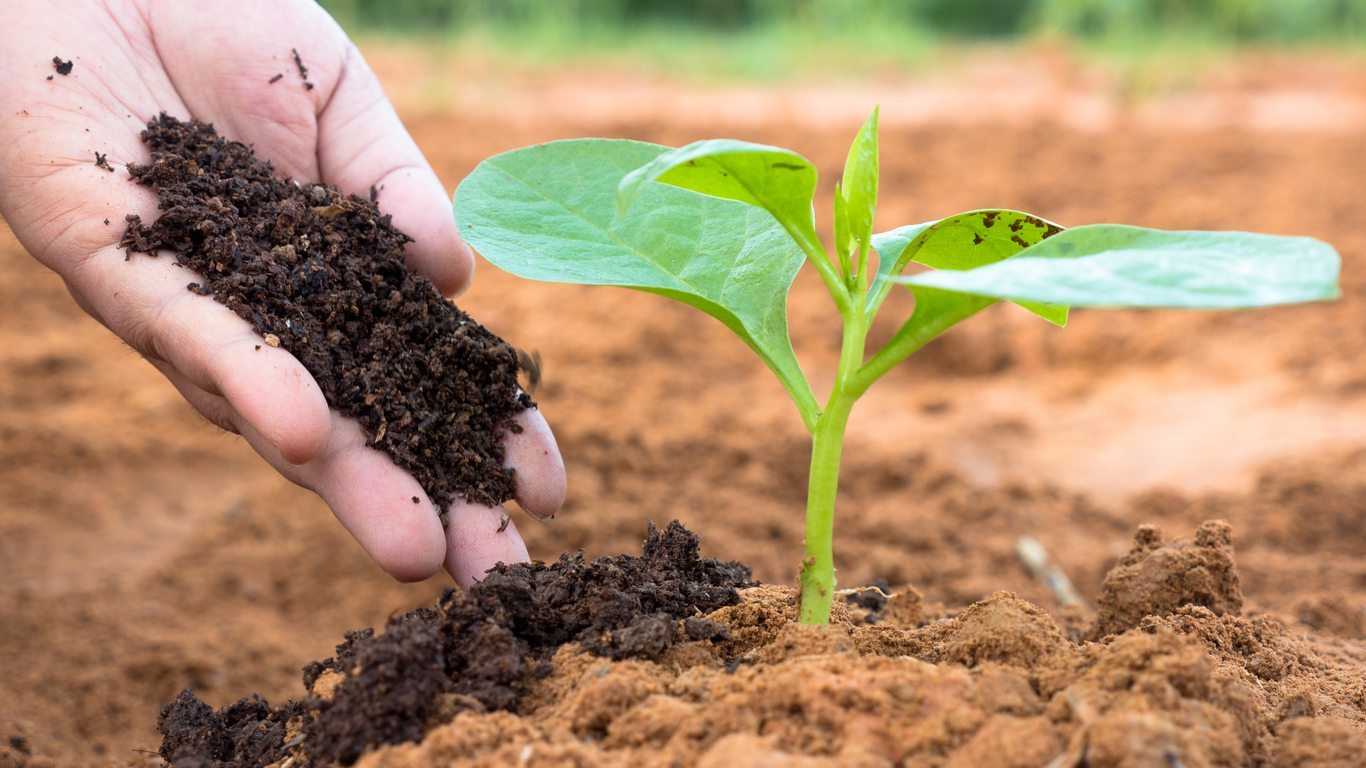
For quicker decomposition, shred or chop the collected materials into smaller pieces. This will increase the surface area, allowing microbes to break them down faster.
Step 3: Create a Compost Pile or Bin
Choose a suitable location for your compost pile or bin. It should be well-drained and receive adequate sunlight. Layer the shredded material, alternating between green (nitrogen-rich) and brown (carbon-rich) materials. Aim for a ratio of approximately 3 parts brown to 1 part green.
Step 4: Maintain Moisture and Aeration
Keep the compost pile moist, but not too wet. The ideal moisture level should be similar to that of a damp sponge. Regularly turn the pile to provide aeration and promote decomposition. This can be done using a pitchfork or a compost turner.
Step 5: Monitor Temperature
As the organic materials decompose, the temperature inside the compost pile will rise. Aim for a temperature between 120-160°F (49-71°C). If the pile gets too hot, it can kill beneficial microbes. If it is too cold, decomposition will slow down.
Step 6: Wait and Let It Decompose
Allow the compost pile to decompose for several months, ideally around 6-12 months. During this time, the organic materials will break down and transform into humus. You can occasionally check the moisture level and turn the pile to ensure proper decomposition.
Step 7: Harvest the Humus
Once the compost has turned into dark, crumbly humus, it is ready for use. Sieve the material to remove any large chunks and use the humus directly in your garden, flower beds, or as a top dressing for potted plants.
By following these steps, you can produce your own nutrient-rich humus and improve the health of your soil. Remember to be patient and let nature do its work!
Gathering the Right Ingredients for Homemade Humus
Humus is a nutrient-rich substance that can be made at home using a few simple ingredients. By gathering the right components, you can create a high-quality humus that will enrich your soil and promote healthy plant growth. Here are the essential ingredients you’ll need:
1. Organic Matter
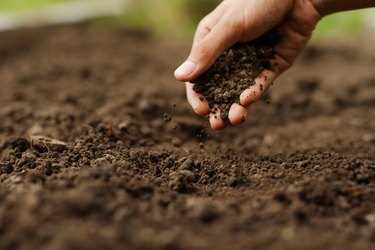
The foundation of any humus recipe is organic matter. This can include a variety of materials, such as:
- Vegetable scraps
- Fruit peels
- Coffee grounds
- Tea leaves
- Grass clippings
- Leaves
Collect these organic materials to use as the base of your humus mixture.
2. Carbon-rich Materials
In addition to organic matter, it’s important to include carbon-rich materials in your humus recipe. These materials help create the ideal environment for decomposition. Some carbon-rich ingredients include:
- Straw
- Wood chips
- Shredded newspaper
- Cardboard
By adding these carbon-rich materials, you’ll ensure a proper balance of nutrients in your humus.
3. Moisture
Humus requires moisture to facilitate the decomposition process. While adding water alone can achieve this, it’s best to use a variety of moisture-rich ingredients. These can include:
- Food scraps with high water content, such as melons or cucumbers
- Grass clippings soaked in water
- Vegetable or fruit juice
- Comfrey leaves or tea
By incorporating these moisture-rich ingredients into your humus mixture, you’ll optimize the decomposition process.
4. Aeration and Nitrogen
A well-aerated compost pile promotes the growth of beneficial microorganisms that aid in decomposition. To provide the necessary aeration and nitrogen, consider including the following ingredients:
- Small branches or twigs
- Eggshells
- High-nitrogen materials, such as manure or grass clippings
These components will help break down your organic matter and create a nutrient-rich humus.
By gathering these ingredients and following a simple composting process, you can create homemade humus that is ideal for improving the health of your soil and promoting robust plant growth.
Step-by-Step Guide to Making Humus
Materials:
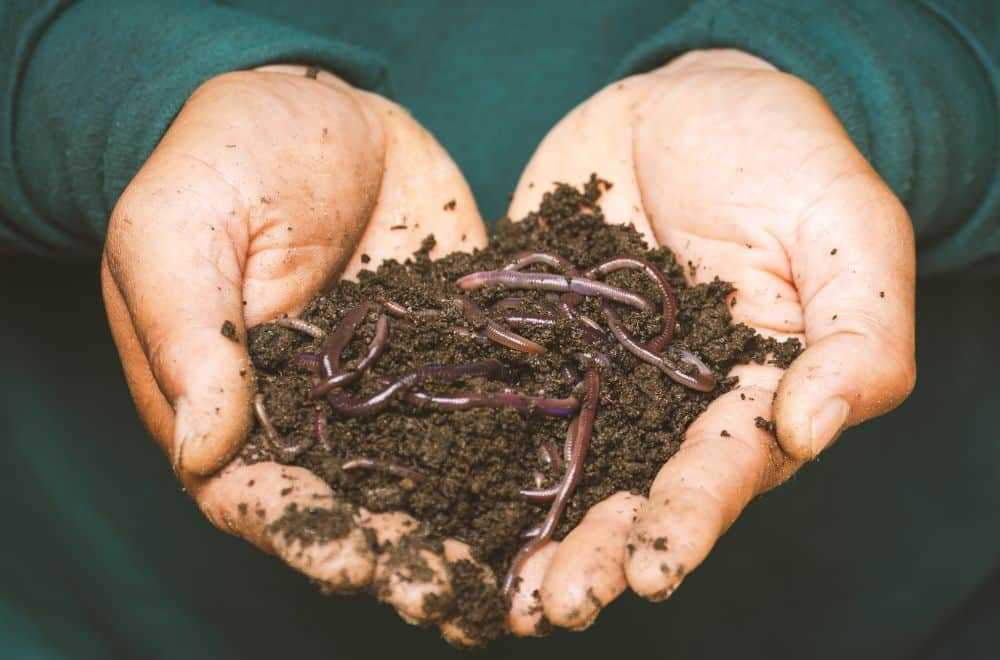
- Compost or organic matter
- Shredder or clippers for breaking down larger materials
- Water source
- Pitchfork or shovel
- Container for composting (such as a compost bin or pile)
Instructions:
- Choose a suitable location for your compost pile or bin. It should be a well-draining area with good air circulation.
- If using a compost bin, assemble it according to the manufacturer’s instructions. If using a compost pile, designate a specific area for it.
- Collect compostable materials such as kitchen scraps, yard waste, and other organic matter. Avoid adding meat, dairy, and oily substances.
- Shred or clip larger materials so they break down more easily.
- Add a layer of compostable materials to the bottom of your compost pile or bin.
- Mix in some water to moisten the materials. The compost should be damp but not soaking wet.
- Continue to layer organic matter and water, making sure to maintain a balanced ratio of greens (nitrogen-rich materials like kitchen scraps) and browns (carbon-rich materials like dried leaves).
- Use a pitchfork or shovel to turn the compost regularly, helping to aerate it and speed up the decomposition process.
- Monitor the moisture level of the compost. If it becomes too dry, add more water. If it becomes too wet, add more dry materials.
- Keep adding compostable materials and turning the pile until the compost has broken down into a dark, crumbly, and earthy-smelling humus. This process can take anywhere from a few months to a year, depending on various factors.
- Once the humus is ready, you can use it in various ways – as a soil amendment, mulch, or top dressing for plants.
Remember to be patient and persistent in your composting efforts. With time and attention, you can create nutrient-rich humus that will benefit your garden and reduce waste.
Where to Use Humus
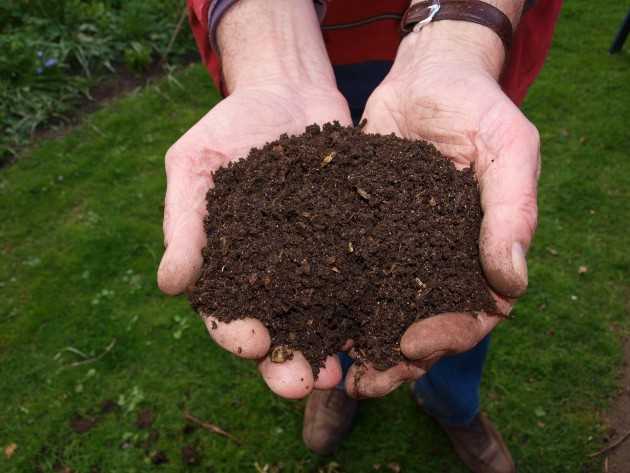
Humus can be used in a variety of ways, and its benefits can be experienced in different areas of gardening and agriculture. Here are some common uses for humus:
1. Soil Amendment and Conditioner
Humus is a valuable soil amendment that helps improve soil structure and fertility. It improves the water-holding capacity of sandy soils and enhances drainage in clay soils. Adding humus to the soil also increases its ability to retain nutrients, making them more available to plants.
2. Vegetable and Flower Gardens
Humus can be incorporated into vegetable and flower gardens to provide a nutrient-rich environment for plant growth. Mixing humus into the soil before planting helps promote healthy root development and improves the overall health and productivity of the garden. It also enhances the soil’s ability to retain moisture, reducing the need for frequent watering.
3. Lawns
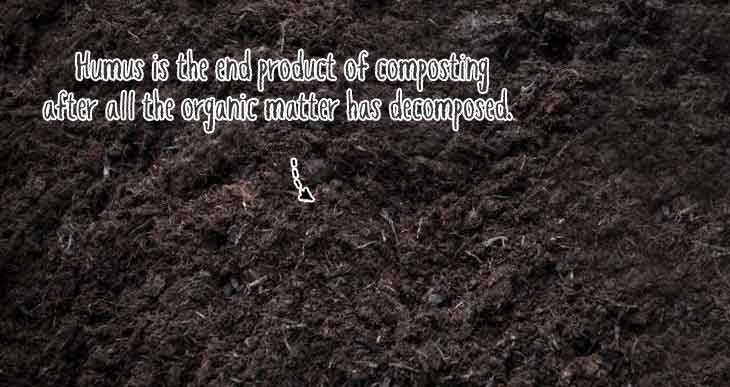
Humus can be used to improve the health and appearance of lawns. Top-dressing the lawn with a thin layer of humus helps to enrich the soil and promote deep root growth. This can result in a healthier, greener lawn that is more resistant to drought and disease.
4. Potting Mixes
Humus is an excellent ingredient for potting mixes used for container gardening. It improves moisture retention and nutrient availability, providing a favorable growing environment for potted plants. Adding humus to potting mixes also helps prevent compaction and improves drainage.
5. Compost Piles
Humus can be used as a compost activator, speeding up the decomposition process. Adding a layer of humus between layers of organic matter in a compost pile helps to create the ideal conditions for the growth of beneficial microorganisms. These microorganisms break down the organic material into nutrient-rich compost.
6. Erosion Control
Humus can be used to control erosion and prevent soil loss on sloping terrain. Applying a layer of humus on bare slopes helps to stabilize the soil and prevent erosion caused by wind and water. The humus acts as a protective cover, reducing the impact of rainfall and helping to retain moisture in the soil.
7. Restoration Projects
Humus can be used in restoration projects to improve degraded soils and promote the re-establishment of native vegetation. Adding humus to degraded or disturbed soils helps to rebuild their fertility and structure, providing a better environment for plant growth and biodiversity.
Overall, humus is a versatile and beneficial substance that can be used in various gardening and agricultural applications. Its ability to improve soil fertility, water-holding capacity, and nutrient availability make it an excellent alternative to compost for enhancing plant growth and health.
Utilizing Humus in the Garden
Humus is a valuable organic material that can significantly enhance the health and productivity of your garden. Here are several ways to effectively utilize humus in your garden:
1. Soil Amendment
Adding humus to your soil is one of the best ways to improve its structure and fertility. Humus helps to increase the soil’s water-holding capacity, improve drainage, and enhance nutrient availability. Incorporate humus into your soil by mixing it thoroughly with the top few inches of soil using a spade or garden fork.
2. Mulching
Applying a layer of humus as mulch around your plants helps to retain soil moisture, suppress weeds, and regulate soil temperature. Spread a generous layer of humus around the base of your plants, making sure to leave a small gap around the stem to prevent rotting.
3. Compost Pile Ingredient
Humus can be used as an ingredient in your compost pile to accelerate the decomposition process and improve the overall quality of the compost. Layer it with other organic materials such as kitchen scraps, yard waste, and manure to create a well-balanced compost pile.
4. Seed Starting Mix
Mixing humus with other ingredients like peat moss and perlite can create a nutrient-rich and well-draining seed starting mix. This will provide the young seedlings with the necessary nutrients for healthy growth and prevent damping off disease caused by overly moist conditions.
5. Transplanting Aid
When transplanting seedlings or established plants, adding a handful of humus to the planting hole can help reduce transplant shock and encourage root development. The humus provides a source of nutrients and beneficial microorganisms that aid in the establishment of the plant.
6. Container Gardening
Humus is an excellent addition to potting mixes for container gardening. It improves the soil structure, promotes proper drainage, and enhances nutrient availability for the plants. Mix humus with other components such as compost, perlite, and vermiculite to create a well-balanced potting mix.
7. Organic Fertilizer
Humus can also be used as an organic fertilizer by applying it directly to the soil around your plants. The nutrients in humus are released slowly over time, providing a steady supply of essential elements for plant growth. Apply a thin layer of humus around the base of your plants and gently work it into the soil.
8. Soil Erosion Control
Humus can help reduce soil erosion by improving the soil’s structure and water-holding capacity. Spread a layer of humus on bare slopes or areas prone to erosion to stabilize the soil and promote the growth of vegetation.
By properly utilizing humus in your garden, you can improve the overall health of your plants, increase their productivity, and create a more sustainable and eco-friendly gardening environment.
Using Humus for Indoor Plant Care
Benefits of Using Humus for Indoor Plants
- Improved soil structure and drainage
- Increased nutrient retention and availability
- Enhanced root development
- Improved water holding capacity
- Increased plant growth and health
How to Incorporate Humus into Indoor Plant Care
When using humus for indoor plant care, there are several methods you can try:
- Top-dressing: Apply a layer of humus on top of the potting soil around the base of the plant. This will slowly release nutrients and improve soil quality over time.
- Mixing into potting soil: Combine humus with your potting soil before planting. This will provide a nutrient-rich environment for your plants from the start.
- Humus tea: Create a humus tea by steeping humus in water for a few days. Use this nutrient-rich liquid to water your indoor plants.
Using Humus for Different Types of Indoor Plants
Whether you have flowering plants, leafy plants, or succulents, humus can benefit all types of indoor plants. However, it’s important to consider their specific needs. Here are a few guidelines:
| Type of Plant | Humus Application |
|---|---|
| Flowering Plants | Top-dress with humus during the growing season or mix with potting soil before planting. |
| Leafy Plants | Top-dress with humus every few months or mix with potting soil for increased nutrient availability. |
| Succulents | Use humus sparingly, as succulents prefer well-draining soils. Mix a small amount with potting soil to improve water retention. |
“Question-Answer”
What is humus and how is it different from compost?
Humus is the organic matter that remains after decomposition, and it is different from compost in several ways. Compost refers to the process of decomposing organic matter under specific conditions, while humus is the end product of that process. Humus has a higher carbon content, is more stable, and has a higher nutrient content compared to compost.
How can I make humus?
To make humus, you need to create a compost pile or heap with a mix of organic materials such as leaves, grass clippings, kitchen scraps, and wood chips. Turn the pile regularly to ensure proper decomposition. Over time, the organic matter will break down into humus. It usually takes several months to a year, depending on the environmental conditions and the mix of materials.
What are the benefits of using humus in gardening?
There are several benefits of using humus in gardening. Humus improves soil structure and drainage, enhances nutrient retention, promotes microbial activity, and increases the water-holding capacity of the soil. It also helps to suppress diseases and pests and creates a favorable environment for plant roots to grow. Overall, using humus can greatly improve the health and productivity of your garden.
Where can I use humus besides in the garden?
Humus can be used in various settings besides the garden. It can be added to potted plants to improve soil quality and provide nutrients. It can also be used in landscaping projects, such as improving the soil for planting trees and shrubs. Additionally, humus can be incorporated into agricultural fields to enhance soil fertility and productivity.
Can I buy humus instead of making it?
Yes, you can buy humus from garden centers, nurseries, or online retailers. It is often sold as “composted manure” or “soil conditioner.” However, it is important to check the quality and source of the humus before purchasing to ensure it is free from contaminants and properly decomposed.
Are there any downsides to using humus?
While humus has numerous benefits, there can be some downsides to using it. If not properly made or sourced, humus can contain weed seeds, pathogens, or chemical residues that can harm plants. Additionally, using too much humus can lead to over-fertilization and nutrient imbalance in the soil. It is important to use humus in moderation and with caution.







